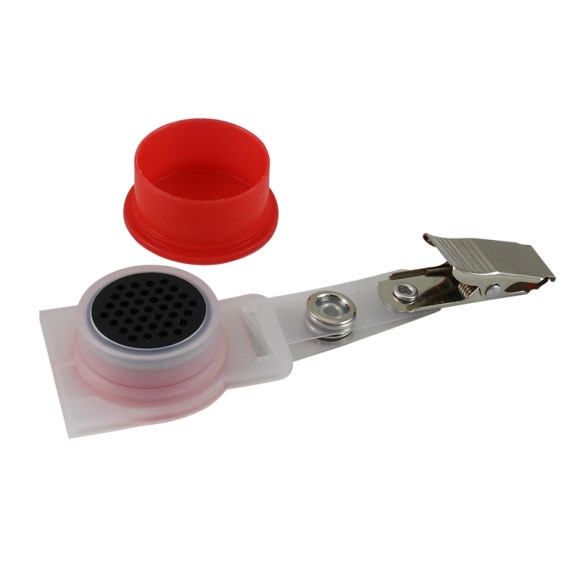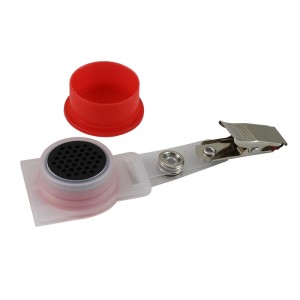SKC Elemental Mercury Passive Sampler
Several methods for determining personal exposure levels of elemental mercury vapor are available. Sampling methods that employ passive samplers are desirable because they are simple to perform and eliminate the need for sampling pumps. Unfortunately, most passive samplers must be returned to the manufacturer for analysis by proprietaryprocedures.
SKC, however, offers an elemental mercury sampler that is designed for analysis using standard laboratory equipment; therefore, the cost per measurement is kept to an absolute minimum compared to other samplers. The 520 Series Elemental Mercury Sampler measures worker exposure levels as a time-weighted Average (TWA) and permits the positive analysis of elemental mercury vapor.
The SKC Passive Sampler for Elemental Mercury is specified in OSHA Method ID-140 for eight hour TWA sampling. A backup report by OSHA expands application of this sampler for long-term sampling up to 120 hours.
The OSHA Laboratory in Salt Lake City, Utah, conducted an evaluation of the SKC elemental mercury sampler over a broad range of mercury concentrations and sampling times. The evaluation consisted of the following major experiments: validation of the sampling rate, desorption efficiency, precision and accuracy, storage stability, reverse diffusion, face velocity dependence, and comparison of methods. The method of reference for this evaluation is OSHA ID-140.
Mercury vapor enters the sampler by positive, controlled diffusion so that a known sample volume is taken for a given period of time. Mercury is completely adsorbed onto the solid sorbent. The sorbent capsule is then taken to an accredited laboratory where the sorbent is dissolved in acid and analyzed by flameless atomic absorption. The sampler holder is cleaned and reused, thereby reducing sampling costs.
Operation
- Remove a sorbent capsule from the plastic vial and insert it into the sampler housing. Attach the sampler near the worker's breathing zone.
- When sampling is completed, remove the sorbent capsule from the holder and insert it into the provided ziploc bag for shipment to an accredited laboratory.
- Clean the housing and insert a new sorbent capsule and foam disk. The sampler can then be reused.
|
Interferences
Extensive field testing and chamber studies have shown that excellent accuracy and precision can be achieved with these samplers without interference from moisture or other gases, including chlorine.
Ambient Temperature
The sampling rate will vary with ambient temperature changes that affect the diffusion rate. This effect is small, but may be significant if sampling at unusually high or low temperatures. The diffusion coefficient (D) is proportional to the temperature (T) to the 1.5 power (D a T1.5). This factor is taken into account in the calculation used in the OSHA method.
Wind Velocity
The sampling rate will remain substantially constant over a range of wind velocity from 25 to 750 ft/min. In very still air conditions (below 25 ft/min), the sampling rate will drop by up to 30%. If very high wind velocities (in excess of 750 ft/ min) are expected, passive samplers should not be used.
Ambient Pressure Changes
The sampling rate varies with ambient pressure changes that affect the diffusion rate. The diffusion coefficient is inversely proportional to the ambient pressure. This factor is taken into account in the calculation used in the OSHA method.
Presence of Other Gases
Mercury sampling on this sorbent has been shown to be unaffected by the presence of other gases, including chlorine. Note, however, that complex interactions in the atmosphere may reduce the total free elemental mercury present to be sampled.
References:
OSHA Method No. ID 140, Occupational Safety and Health Administration, Inorganics Division, OSHA Technical Center, Salt Lake City, Utah.
A. O. Rathje and D. H. Marcero, "Improved Hopcalite Procedure for the Determination of Mercury Vapor in the Air by Flameless Atomic Absorption," Am. Ind. Hyg. Assoc. J. Volume 37 (1976), pp. 311-314.
Method MDHS 16/2, Health and Safety Executive (HSE), United Kingdom


